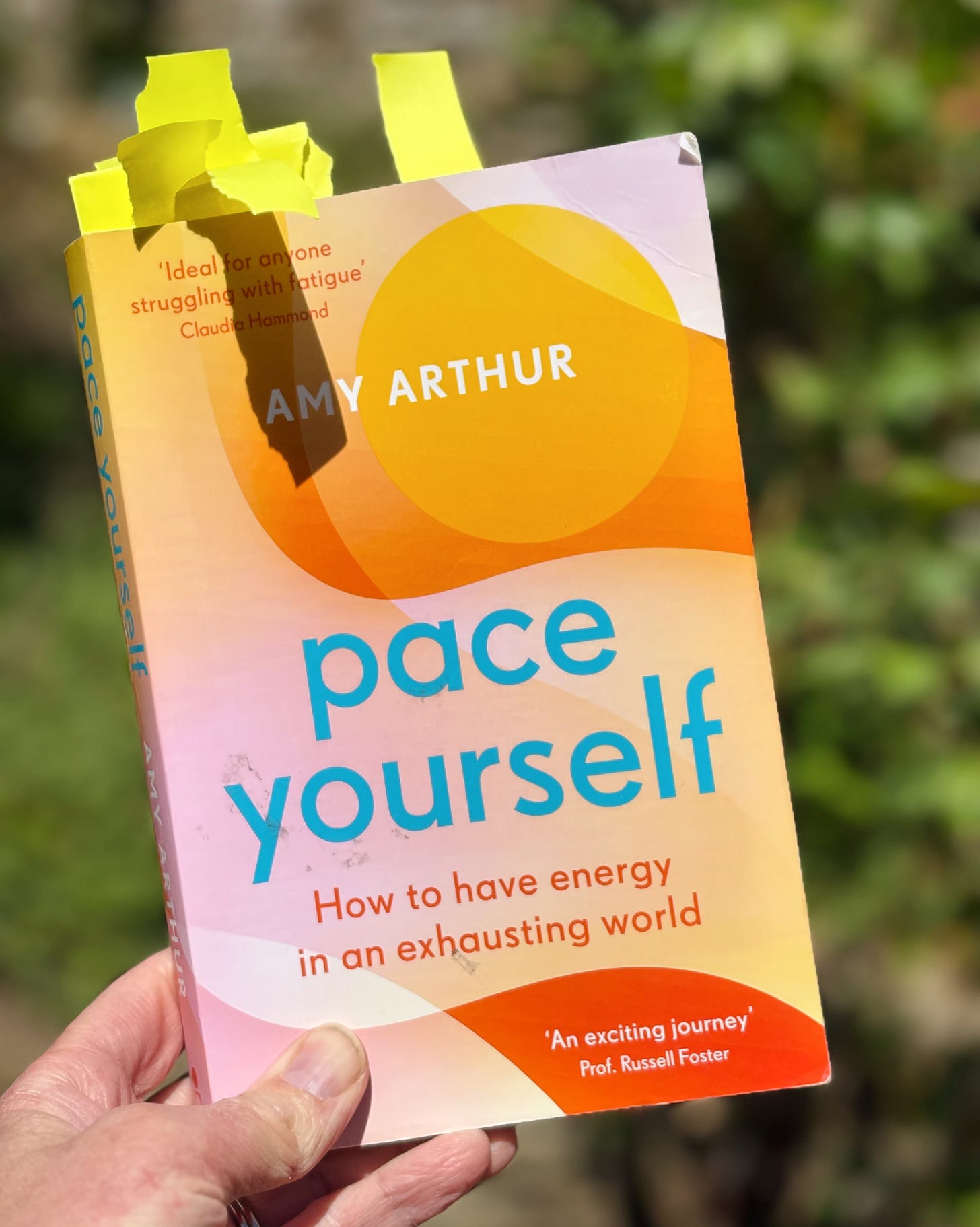Well, hello there body (Part 1)
What to do if your body is talking but you're not really listening
“If somewhere along the way you lost the part of yourself that felt you could do anything, be anything: if there is a part of you that doesn’t feel strong or doesn’t know how to begin, that doesn’t feel you look the ways you ‘should’ or feels ashamed in your own body, I am here to tell you whatever you have believed in the past does not have to determine your story.” — Poorna Bell
There’s an irony in beginning A Year of Living Wellishly here—because for most of my life, being in my body hasn’t felt especially great.
I’ve always been more comfortable in my head. Give me a cafe, a notebook, a podcast—almost anything over a treadmill or spin class. I’ve been guilty of undervaluing the power of movement, of dismissing its effect on my mood. Why would I choose to sweat when I could choose to stay in my head?
For years, I lived “shoulders up.” Life wasn’t embodied. It wasn’t about what I felt—only what I thought. Until recently, I wasn’t even sure my mind and body were in conversation. And if they were, I was definitely ignoring their back-and-forth.
It felt counterintuitive to me that moving my body might restore something emotional. That it might help me think better, not less. When I was feeling low, movement was the last thing I wanted. I’d crawl into bed early, or slump to the floor by the radiator, seeking warmth and stillness. Every part of me went quiet. Motionless limbs. No motivation. A leaden kind of inertia.
But lately, my body has become more insistent. It’s trying to speak.
“Hi, I’m here.”
“You can’t ignore me forever.”
“You need me to live, duh.”
Its demands are higher-pitched now—no longer whispers, but persistent nudges. Midlife has brought its own commentary: aches that weren’t there before, a heaviness that feels as much physical as emotional, a kind of outline that’s colouring itself in but I’m no longer holding the pencil.
Still, my mind doesn’t quite trust my body. After a period of fatigue, it has learned to be wary.
“Want to walk up the stairs? Not today.”
“Thinking of a hike? That’s a two-day recovery.”
“Want to feel excited? Be prepared for the crash.”
I’ve started seeing my body not as an ally, but as something to manage. To bargain with. One burst of energy might cost me dearly. One missed hormone dose might leave me unravelled. The result? Caution. A constant scanning of risk. Movement feels less like freedom and more like depletion. Being in my body something uncomfortable to avoid.
And yet—I’m tired of the inertia. That’s the real irony. I’m weary of this dysfunctional relationship, this mind-body standoff. I don’t want to age into a story of disconnect.
I want to believe we can renegotiate even now, even in midlife. That my mind can talk to my body and my body to my mind in ways that feels kinder, more tell-me-about-your-day rather than what-were-you-thinking?
And I’m starting to think this is within reach.
Everything I’ve been reading about midlife, about fatigue, about wellbeing, is pointing in the same direction: that this connection—this conversation between body and mind—is not just possible, it’s essential.
But it’s not just about exercise which has probably been the barrier to entry as my brain goes back to PE class or making myself into someone who goes to the gym. It’s probably less about getting fitter and more about catching my mind.
In Pace Yourself: How to how energy in an exhausting word by Amy Arthur (@amyearthur), I learn that even “physical activity can be a form or emotional and mental rest,” that “simple movements boost our mood” and “that breaking up periods of sedentary rest with short amounts of physical activity can have a bigger impact on our overall health than infrequent blocks of hour-long exercise.” I also learn that sometimes physical exhaustion is connected with not just using too much physical energy but also too little!
“The mind and the body aren’t separate entities, though people still talk of ‘mental’ and ‘physical’ health.” — Amy Arthur
So if I know it’s necessary, if I know that saying hello, how’s it going, to my body might offer a way out and forward and through, where to start? Well that’s something for next time. How to start experimenting with physical activity when you kind of do and don’t want to move.
Part 2, tomorrow.
x Claire
Hi, if you’re new here, welcome! I’m Claire, a wellbeing writer, certified emotions coach and founder of If Lost Start Here, a company on a mission to get people to a better place.
Join me this year as I try to navigate this world of wellness in curiosity-driven ways that feel kinder to ourselves, particularly when life feels overwhelming and uncertain.
If talking about anything I cover here would help check out my 1:1 sessions.
Access to The Wellery is for paid subscribers. Here we’re experimenting with a more collective form of wellness. If you join this month, you can still get access to the Spring Everyday Retreat as well as the Spring CoWell focusing on this mind-body connection.





Thank you for this, Claire. So much of it resonates with me. I’ll look forward to part 2!